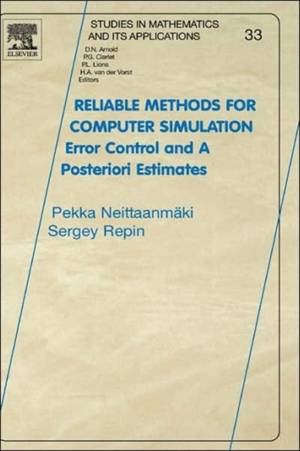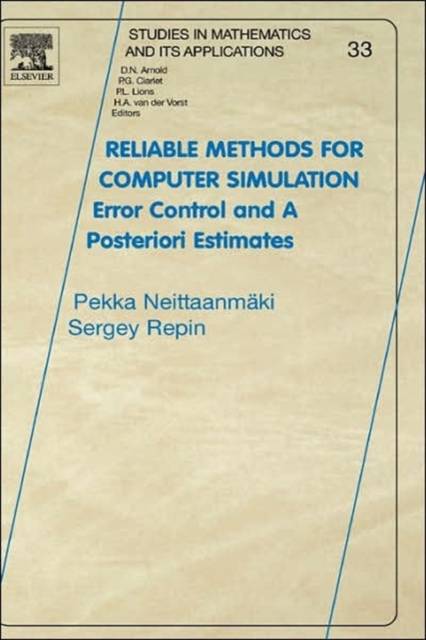
- Afhalen na 1 uur in een winkel met voorraad
- Gratis thuislevering in België vanaf € 30
- Ruim aanbod met 7 miljoen producten
- Afhalen na 1 uur in een winkel met voorraad
- Gratis thuislevering in België vanaf € 30
- Ruim aanbod met 7 miljoen producten
Zoeken
Reliable Methods for Computer Simulation
Error Control and Posteriori Estimates Volume 33
Pekka Neittaanmäki, Sergey R Repin
€ 212,45
+ 424 punten
Omschrijving
Recent decades have seen a very rapid success in developing numerical methods based on explicit control over approximation errors. It may be said that nowadays a new direction is forming in numerical analysis, the main goal of which is to develop methods ofreliable computations. In general, a reliable numerical method must solve two basic problems: (a) generate a sequence of approximations that converges to a solution and (b) verify the accuracy of these approximations. A computer code for such a method must consist of two respective blocks: solver and checker.In this book, we are chiefly concerned with the problem (b) and try to present the main approaches developed for a posteriori error estimation in various problems.The authors try to retain a rigorous mathematical style, however, proofs are constructive whenever possible and additional mathematical knowledge is presented when necessary. The book contains a number of new mathematical results and lists a posteriori error estimation methods that have been developed in the very recent time.
Specificaties
Betrokkenen
- Auteur(s):
- Uitgeverij:
Inhoud
- Aantal bladzijden:
- 316
- Taal:
- Engels
- Reeks:
- Reeksnummer:
- nr. 33
Eigenschappen
- Productcode (EAN):
- 9780444513762
- Verschijningsdatum:
- 1/12/2004
- Uitvoering:
- Hardcover
- Formaat:
- Genaaid
- Afmetingen:
- 154 mm x 231 mm
- Gewicht:
- 607 g

Alleen bij Standaard Boekhandel
+ 424 punten op je klantenkaart van Standaard Boekhandel
Beoordelingen
We publiceren alleen reviews die voldoen aan de voorwaarden voor reviews. Bekijk onze voorwaarden voor reviews.











